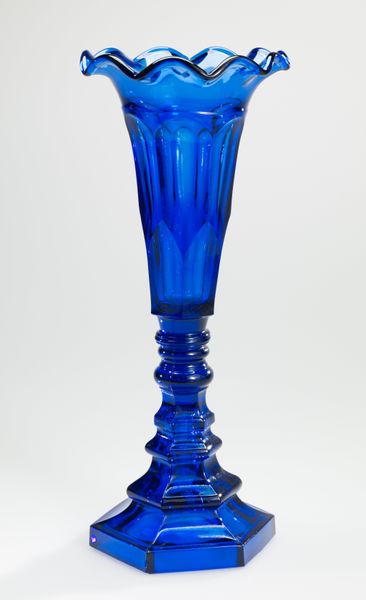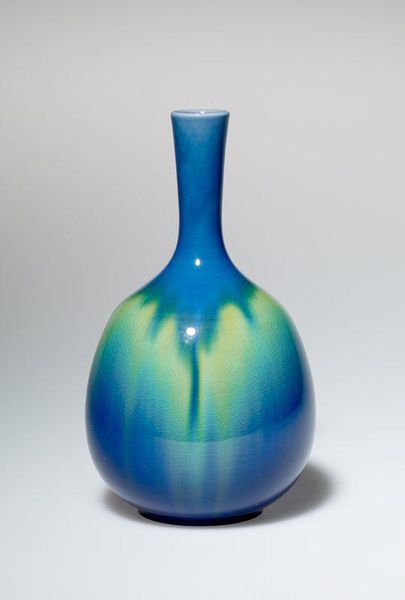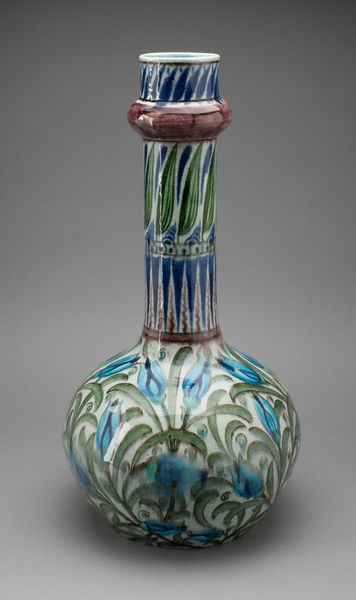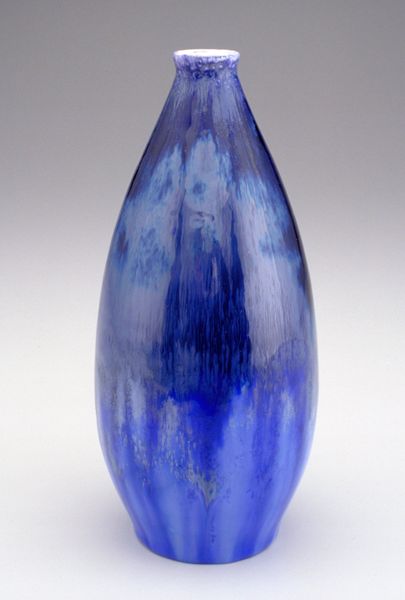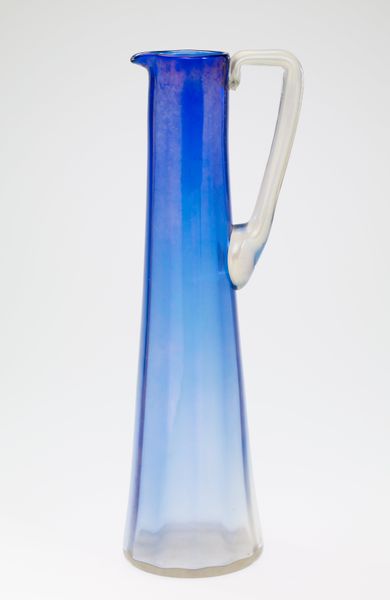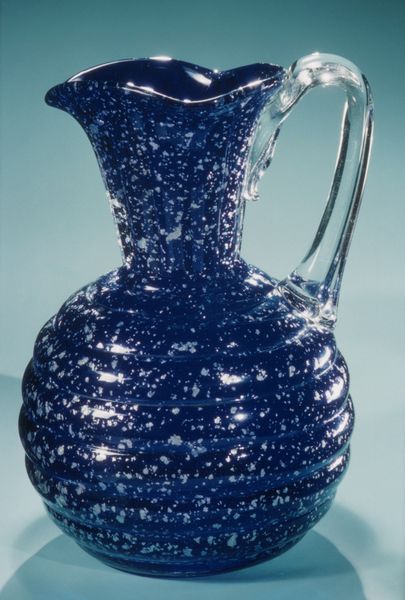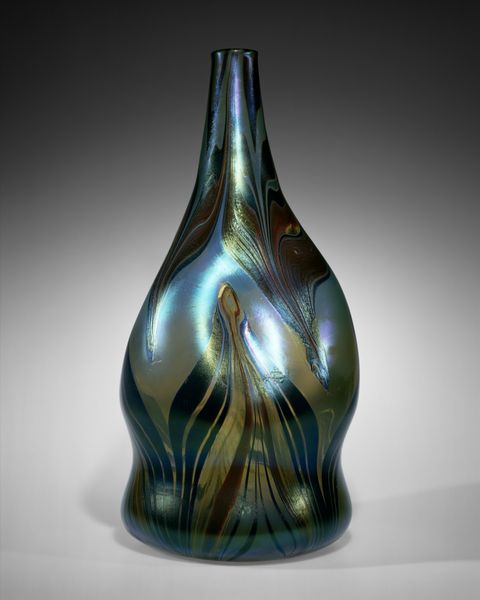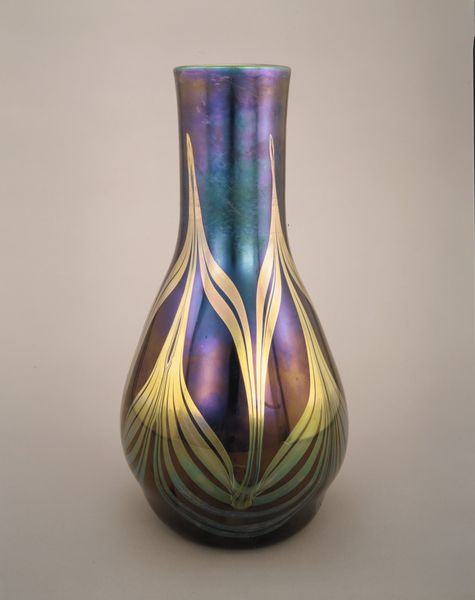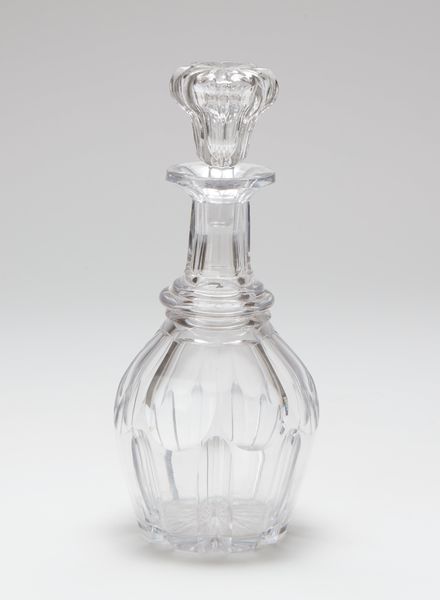
glass
#
form
#
glass
#
geometric
#
ceramic
#
decorative-art
Copyright: Public Domain
Editor: This is a cobalt blue glass cruet with stopper, dating from around the 19th century. I’m really drawn to how the light plays on its surface, highlighting the swirling design. What’s your take on its significance, particularly from a historical viewpoint? Curator: This object exemplifies how decorative arts became increasingly accessible during the 19th century. The industrial revolution and new glassmaking techniques meant items like this, once luxury goods reserved for the wealthy, could be found in more middle-class homes. How do you think the color influences its reception? Editor: The rich blue definitely gives it an air of sophistication. Do you think that's intentional, a way to imply wealth even as these objects became more common? Curator: Absolutely. Consider how the aspiration for social mobility influenced purchasing decisions. People sought to emulate the upper classes, and objects like this cruet allowed them to curate a respectable image. Notice also the care with the craftsmanship despite it being a common good now. This tells us how societal values placed importance on quality, even with rising affordability. Editor: That’s fascinating. It's like this object encapsulates a whole social narrative of the era! I hadn't really thought about how accessibility changes the value and perception of an art object. Curator: Exactly. It reflects evolving social dynamics and the shifting landscape of consumption during the 19th century. I wonder, reflecting on this, how the easy reproducibility afforded by modern technologies today impact how value art now? Editor: Definitely makes me rethink what I consider "art." Thanks for shedding light on how social contexts can reshape our understanding of something as seemingly simple as a cruet!
Comments
No comments
Be the first to comment and join the conversation on the ultimate creative platform.

